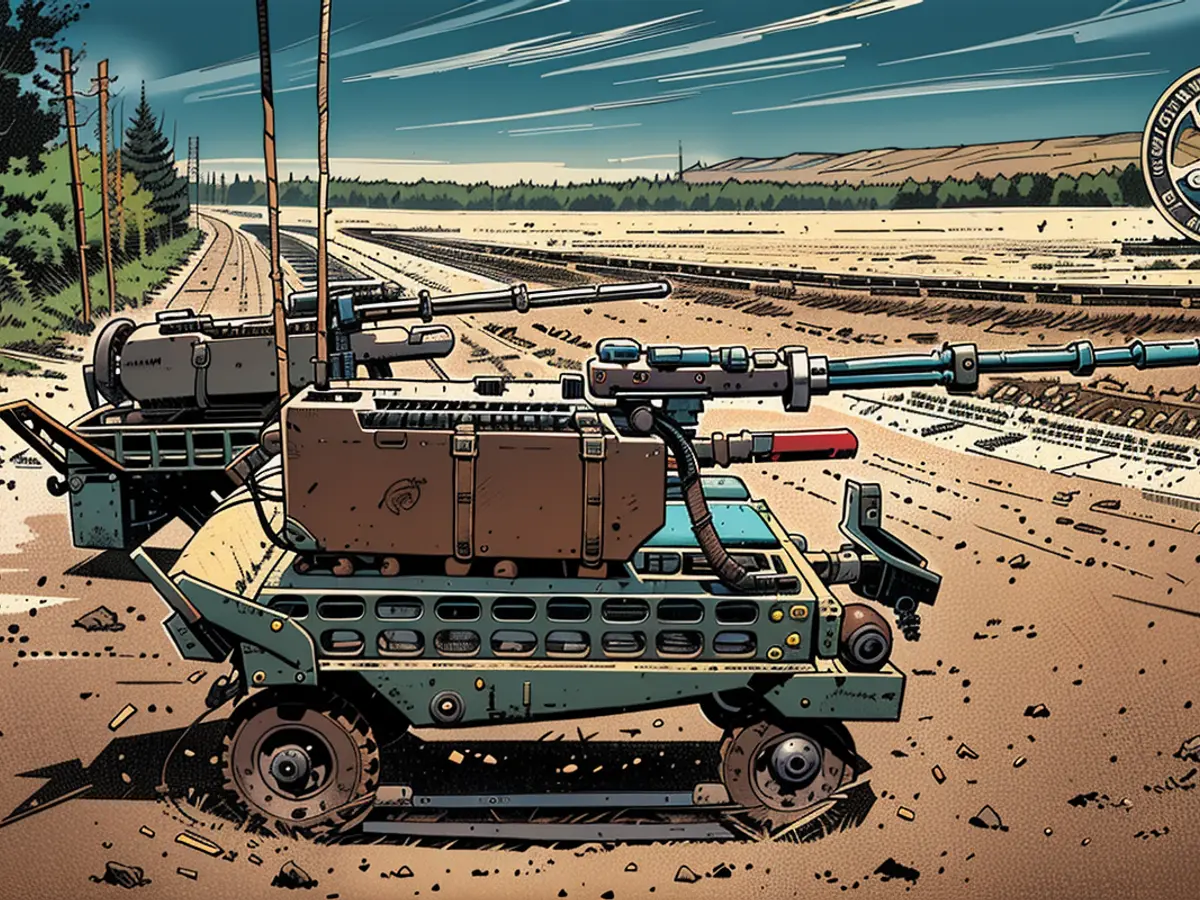Upgrade - Drone war - now the time of the mini-tanks in Ukraine begins
Small drones have revolutionized the war in Ukraine. However, soldiers on both sides want more transport weight. They want to move heavier loads and drop more dangerous bombs. On the internet, drones give the impression of eternal success. This is mainly due to the fact that their operators only publish videos of successful attacks. The small size of the explosive charge that a drone carrying a camera can transport limits its effectiveness. Such a drone can kill or injure a man, but a better barbed wire fence holds it back.
Large quadcopters can move loads of 40, 60, or even 100 kilograms. In Ukraine, they are called "Baba Yaga," after a legendary witch who flies over the fields in her cauldron. Such an impact is enormous. Russians have recently shown that their drone can transport a soldier. However, these giant drones, which are also used in agriculture and construction, are conspicuous targets. In addition, they are already very expensive in their civilian version.
Ground drones for heavy loads
For heavy loads, ground drones are more effective – whether they work with all-terrain or tracked drive. They are used for recovery, transport, and as bomb drones. As bomb drones, they are all successors to the German Goliath. This mini-tank from World War II was controlled by a wire. Since it had no camera, the chosen route had to be simple and visible. But then it rammed into the enemy fortification and exploded itself once it reached its target. The same thing happens in Ukraine, but with a camera signal instead. Bomb drones often hang on a glass fiber cable, so the radio connection cannot be disturbed. There is no radio signal that reveals the drone. The Russian despatch can carry 100 to 250 kilograms of explosives.
However, ground drones are more power-hungry and expensive than their flying counterparts. Simple quadcopters are based on civilian products that are produced in millions. They already existed at the beginning of the war, all that was needed was to attach a explosive charge. A corresponding market for civilian ground drones does not exist. Civilian ground robots exist only in special applications. In large quantities, only very small robots are built for lawn mowing.
Terrain is challenging
Drone expert Michael Boyle explained on "Radio Free Europe" the problems. The biggest one is the terrain. Air or water are simple environments, but ground drones must be able to move quickly over uneven surfaces to complete their task and do this even under fire in contested areas. Obstacles like a ditch, wall remains, barbed wire rolls, and rubble fields present insurmountable barriers for many ground drones. In addition, costs come into play. "The development of a ground vehicle that can be remotely operated over uneven terrain and integrated into military units is expensive," Boyle said. During the Syrian war, Moscow experimented with partially autonomous robots, with disappointing results. Among other things, there were major problems with the radio connection in built-up areas.
## Suitable for Simple Transport Tasks
Besides bombing, ground drones are used for transport purposes along roads and paths. Due to the enemy monitoring the entire rear part of the front with their observation drones, any movement in the open carries great risks. Small strike groups are also supplied from the air with water, food, and medicaments. However, ground drones can only transport up to approximately 100 kilograms of supplies. In principle, it is easier to pull a cart with 100 kilograms of cargo than to lift the same weight into the air. Ground drones are therefore used for transport and rescue missions – otherwise, a dangerous task. Drone operators on both sides spare neither the severely wounded nor medics. On the contrary, they boast in their videos about their war crimes. Often, the wounded die from the sadism of the pilots, who torture their victims with mock attacks to film their fear. With a ground drone, one can at least try to collect a wounded person without risking losing the entire rescue team.
The Anti-Drone Ground Drone
The latest development is the Russian robot "Wall-E" – named after the Disney character. Wall-E is an anti-drone drone. The small tracked vehicle transports the jammer "Fumigator," which interrupts the signal between the drone and its operator. Wall-E's protective dome is said to have a radius of 250 to 300 meters. There are also smaller transmitters that can be carried in a backpack. However, the Mini-Panzer is better suited. To overlay the signals of the drone pilots at a sufficient distance, a lot of electrical energy is required. If the transmitter is to operate the entire mission, the batteries cannot be carried anymore. Additionally, one man from the group is needed solely for the transmitter. The Mini-Panzer can move a lot more battery capacity or also carry a generator that works with fuel.
Source: RFE/RL, Defence Post
- Despite the effectiveness of ground drones in transporting heavy loads for missions such as recovery and bombing, their high power consumption and expense make them less viable compared to smaller drones.
- The terrain poses a significant challenge for ground drones, as they must navigate quickly and effectively over uneven surfaces under fire in contest areas, which is expensive to develop and often results in disappointing results, as seen during the Syrian war.
- Ground drones are also used for simple transportation tasks, including supply drops of water, food, and medicaments, as well as rescue missions, where their ability to transport up to 100 kilograms of cargo makes them more practical than lifting the same weight into the air.
- The latest development in counter-drone technology is the Russian robot "Wall-E," which utilizes a jammer called "Fumigator" to interrupt the signal between the drone and its operator, providing a protective dome with a 250-300 meter radius to disrupt enemy drones, making it a valuable asset in countering aerial threats.








